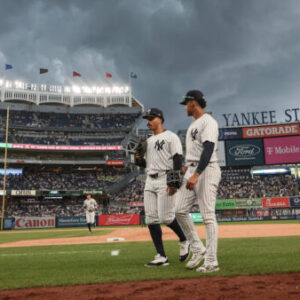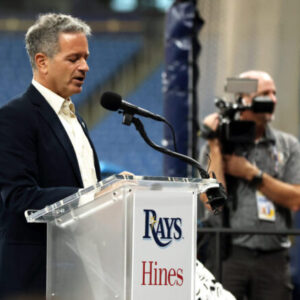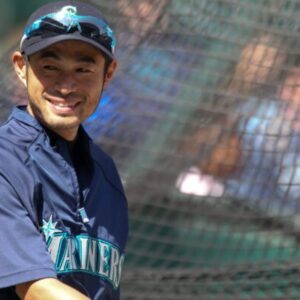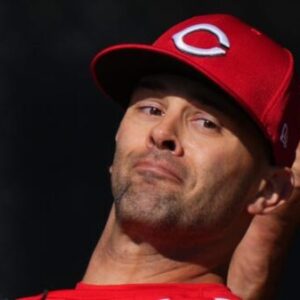On Monday, the ballot for the 2025 Baseball Hall of Fame voting was released. (We already covered the Classic Era ballot–formerly referred to as the Veterans Committee ballot–here. ) There’s one obvious choice and a few others who have a shot at getting voted in this year, plus a handful of interesting first-year candidates.
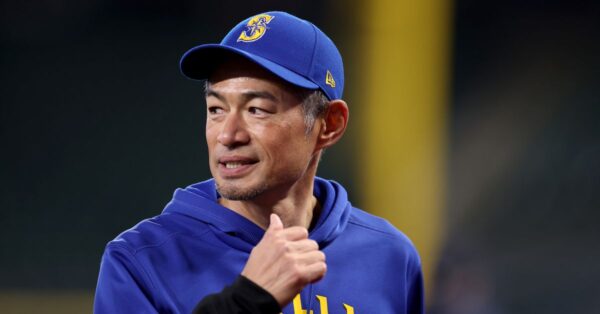
I’ve broken the ballot into tiers. Let’s have a look! Tier 1: The plaque should already be finishedIchiro Suzuki, RFI could sit here and say that Ichiro got more than 3,000 hits despite not playing in the United States until he was 27 and had been playing professionally for nine years; or that he won an MVP in his first season stateside (and should have won another in 2004); or that he was one of the best defensive corner outfielders in baseball history; or that he was one of the most successful high-volume base stealers ever; or that of the top 12 single-season hit totals of all time, ten of them came between 1911 and 1930 and the other two were Ichiro (including a record-setting 262 in 2004, a record that may never be broken).
But you don’t need to hear those things. Ichiro is a legend, a myth, a character, the “true” hit king in many people’s eyes. He probably won’t, but he should go in unanimously.
He is exactly the type of player the Hall of Fame was built for. Tier 2a: Could there be two first-ballot guys? CC Sabathia, SPI’m a Brewer fan, so I say we should put Sabathia in the Hall of Fame based on the last three months of the 2008 season alone!
In truth, Sabathia has what I’d call a borderline Hall of Fame case: 251 wins and 62. 5 WAR are not traditionally numbers that got you in the Hall of Fame, but this is a different time, and Sabathia is a different kind of guy. He has a Cy Young and the legendary 2008 run on his resume, he was the missing piece for the 2009 Yankees, and he did reach 3,000 strikeouts.
I think people viewed him as a Hall of Famer while he was playing, and that will also boost his case, as will his still-prominent public persona. Based purely on the statistical resume, I don’t think Sabathia is a first-ballot Hall of Famer, but it feels like he’s going to get the votes sooner or later, and it’s not remotely inconceivable that it could happen this year. Tier 2b: Is this the year?
Carlos Beltrán, CF (third ballot, 57. 1% last year)Andruw Jones, CF (eighth ballot, 61. 6%)Billy Wagner, RP (tenth ballot, 73.
8%)It would be heartbreaking if Billy Wagner does not get the handful of extra votes he needs in what is his final year on the ballot. There are just two players who received vote percentages as high as Wagner who did not get into the Hall via BBWAA voting: Nellie Fox, who got 74. 7% on his last ballot in 1985, and Jim Bunning, who got 74.
2% in 1988 but then got decreasing support in his last three years because of an influx of legendary pitchers hitting the ballot. Both Fox and Bunning were later choices of the Veterans Committee. Wagner deserves it.
The bar is necessarily high for relievers, but I think there’s a very strong case that Wagner is the best relief pitcher of all time who isn’t named Mariano Rivera. He has rate stats compare with Rivera’s, and while there’s one big issue with Wagner’s case—his postseason career was abysmal—he’s the second-best modern reliever. Jones has three more chances to get in.
He might need them, as his support leveled out a bit last year after five straight years of big jumps. He’s arguably the best defensive center fielder ever and he hit 434 homers. That’s certainly a good resume.
The resume isn’t the issue with Beltrán. He’s got the numbers: 435 homers, 565 doubles, and the highest stolen base percentage ever (86. 4%) for a player with at least 200 stolen base attempts (he stole 312 bases in 361 attempts), plus he’s one of the best postseason performers in baseball history.
But he was tied up in the Houston Astros sign-stealing scandal and voters have penalized him for that; his support jumped by about 11 percent after his first ballot and would need to jump about 18 more for him to get in. It doesn’t seem likely this year. Tier 3: The Phillies (or: will we see any meaningful progress?
)Bobby Abreu, RF (sixth ballot, 14. 8%)Jimmy Rollins, SS (fourth ballot, 14. 8%)Chase Utley, 2B (second ballot, 28.
8%)Utley’s case depends heavily on how you view advanced stats, particularly those related to defense, as he wasn’t really considered a great defensive second baseman during his career (he never won a Gold Glove) but defensive metrics suggest he’s one of the best defensive second basemen of the 21st century. Utley was a very good offensive player but if he was a merely “fine” defensive player, he doesn’t really have a great Hall of Fame case. But if the metrics are right, he has the best five-year run by a second baseman this side of Joe Morgan and likely deserves enshrinement.
Abreu inched forward a little in 2023 before falling back about half a percent in last year’s voting. It does not look like he will be able to find another 60 percent of votes in the next five years, but who knows. Abreu walked a ton, he got a ton of extra-base hits, and he stole a bunch of bases; during a seven-year stretch from 1998-2004 he averaged 106 walks, 41 doubles, six triples, 23 homers, and 29 steals per season.
But he did this mostly in obscurity for a bad Phillies team at a time when people didn’t fully appreciate the things that he was good at. Abreu’s career 60. 2 WAR suggest he should be viewed as a real candidate—other corner outfielders with less WAR include Willie Stargell, Ichiro, and Vladimir Guerrero.
But his lack of star power during his time in the league likely dooms his case. Kind of the opposite situation is the case of Jimmy Rollins, who was a big star during his playing days (he won an MVP, led the league in triples four times and stolen bases once, won four Gold Gloves and a Silver Slugger), but whose advanced numbers do not support his Hall of Fame case. Rollins’ career OPS+ is just 95, and while he was a good defensive shortstop, he was not a historically good one, and if your OPS+ is just 95, that’s kind of where you’d need to be for real Hall consideration.
Tier 4: Players who have… “questions”Andy Pettitte, SP (seventh ballot, 13. 5%)Manny Ramirez, OF (ninth ballot, 32. 5%)Alex Rodriguez, SS (fourth ballot, 34.
8%)Omar Vizquel, SS (eighth ballot, 17. 7%)I am not here to rehash the PED debate. Rodríguez and Ramírez would be no-doubt Hall of Famers under other circumstances.
Pettitte still has his supporters, but even if he didn’t have any questions, he can only be considered a fringe candidate. None of them will get elected, and Rodriguez—despite a resume that, statistically, would make him the second-best shortstop of all time behind Honus Wagner—will probably never even approach the 66% that Barry Bonds got in his last year on the Hall of Fame ballot given the nature of his PED use and suspension. Vizquel’s issues are not performance-enhancing in nature, but there are major problems with his case even if you’re willing to overlook his shortcomings as a human being, which most voters (rightfully) are not.
He was a very good defensive player but he wasn’t Ozzie Smith, and his offense was, uh, bad. Tier 5a: Interesting debutants who could make a second ballotFélix Hernández, SPIan Kinsler, 2BDustin Pedroia, 2BTroy Tulowitzki, SSThis is an intriguing quartet, and while none of these four would make my hypothetical Hall of Fame, they all were great players deserving of further discussion. Some thoughts on each:Dustin Pedroia was an MVP-winning superstar over his first seven seasons and looked destined for Cooperstown after his age-30 season.
It wasn’t that hard to imagine him getting 3,000 hits and 600 doubles, but he just couldn’t stay healthy in his 30s. Still, he finished with over 50 career WAR, more than a handful of Hall-of-Fame second basemen. Speaking of players who couldn’t stay healthy, Troy Tulowitzki was one of the greatest shortstops of all time… when he was on the field.
From 2009-14, Tulo had a 137 OPS+ while playing arguably the best defense in baseball. His rate of 5. 2 WAR per 150 games is seventh all time among shortstops behind five Hall of Famers and Captain Jack Glasscock, who is arguably the most deserving player from the 1800s who is not in the Hall of Fame.
But he had only three seasons in which he played even 130 games and was basically finished by his 32nd birthday. The other infielder here, Ian Kinsler, maybe didn’t have the talent that Pedroia or Tulo did, but he was a player who did lots of things very well. Kinsler never finished higher than 11th in MVP voting and he only made four All-Star teams, but he kept plugging away.
He had at least 2. 4 WAR in every season of his career except the first and last ones, which might not seem like much, but that adds up. He finished with 1,999 hits, 416 doubles, 257 homers, and 54.
1 WAR. I don’t think that makes him a Hall of Famer, but he was a really good player. Finally, King Félix.
Hernández felt like a Hall of Famer; he came up very young and was a superstar by his mid-20s, he threw a perfect game, he won two ERA titles, and he had a stretch where he had four top-four Cy Young finishes in six years and was in the “best pitcher in the world” conversation. But his career was marked by occasional brilliance, frequent goodness, and a sometimes-nagging feeling that he wasn’t quite living up to his potential. He fell off quickly after his 30th birthday and his career ended quietly when he was only 33.
Like Pedroia, he looked like a Hall of Famer through his age-29 season, but an utter lack of production after that will likely keep him out. Tier 5b: Returning players who might fall offMark Buehrle, SP (fifth ballot, 8. 3%)Torii Hunter, CF (fifth ballot, 7.
3%)Francisco Rodríguez, RP (third ballot, 7. 8%)David Wright, 3B (second ballot, 6. 2%)Buehrle was an uncommonly consistent pitcher who will probably be the last player ever to have 200 innings pitched in 14 straight seasons.
Rodríguez will not get the support he needs, but he’s a top-15-or-so reliever ever. Hunter put up impressive counting stats (2,452 hits, 353 homers, 498 doubles) and had a reputation as one of the best center fielders of his time, but the advanced metrics don’t like his defense as much as the eye test, and he didn’t walk much, and those things probably tank his case. Wright is in the same category as Pedroia and Tulowitzki above: he had Hall-of-Fame talent but couldn’t stay healthy once he hit his 30s.
Like Pedroia, Wright was probably closer to Hall-of-Fame volume than you realize, but the counting numbers (1,777 hits, 242 home runs, 390 doubles) aren’t quite going to get him there. Tier 6: Really good players! No real Hall of Fame argumentCurtis Granderson, CFRussell Martin, CHanley Ramírez, SSBen Zobrist, IF/OFZobrist was an advanced stats darling when measures such as WAR were relatively new; he was a valuable and versatile player who walked a lot, played good defense, and hit with solid power.
He also played a big part on back-to-back World Series winners, first with the Royals in 2015 and then with the Cubs in 2016, with whom he won World Series MVP honors. Granderson was a solid player who had a couple of seasons at a superstar level, and finished with 1,800 hits and almost 350 homers. Ramírez was another guy who had a couple of superstar seasons; he was the best shortstop in baseball in 2008 and 2009, and won a batting title and finished second in MVP voting in the latter year when he was only 25.
Injuries and ineffectiveness marred his career after that, though he still had occasional flashes. Whether you ascribe to the Fangraphs or Baseball Reference measurements of catcher defense will determine how you feel about Russell Martin. Via Baseball Reference, Martin had a very solid career—a slightly above-average offensive player who played solid defense.
But Fangraphs sees enough value in his pitch framing to vault him into Yadier-Molina levels of defensive prowess, and gives him 54. 5 career WAR, which is Hall worthy for a catcher. I see Martin as somewhere in the middle of those two valuations, but not at a Hall of Fame level; it’ll be interesting to see if he gets any real support.
Tier 7: “We’re just happy to be here”Adam Jones, CFCarlos González, OFBrian McCann, CFernando Rodney, RPVery quickly on these guys: Jones made five All-Star Games, won four Gold Gloves, and had almost 2,000 hits and 300 homers. McCann, like Martin, was judged to be an excellent pitch framer (giving him a large disparity in bWAR versus fWAR) and finished his career with 1,590 hits and 282 homers. González had a superstar year when he was 24 in which he won a batting title and led the league in hits and total bases.
He struggled to replicate that success, though he finished his career with three All-Star appearances, three Gold Gloves, and two Silver Sluggers. Rodney had one of the best relief seasons in modern history in 2012, when he saved 48 games with a 0. 60 ERA for the Rays.
He never came close to that level of success in any other season, but he is 19th all time with 327 saves. Predictions and final thoughtsIchiro has a real chance at being the second unanimous Hall of Famer. Wagner should get the votes he needs with a bump on his last ballot.
Finally, I think Sabathia sneaks over the line with about 80% of the vote, giving us two first-ballot Hall of Famers. Andruw Jones will need to wait another year or two. I’m also interested to see where the level of support for Beltrán and Utley comes in; if Beltrán is about the same as last year, he may have a real problem on his hands.
If Utley doesn’t start to make a leap, it may never happen for him. This post was originally published on this site be sure to check out more of their content.
